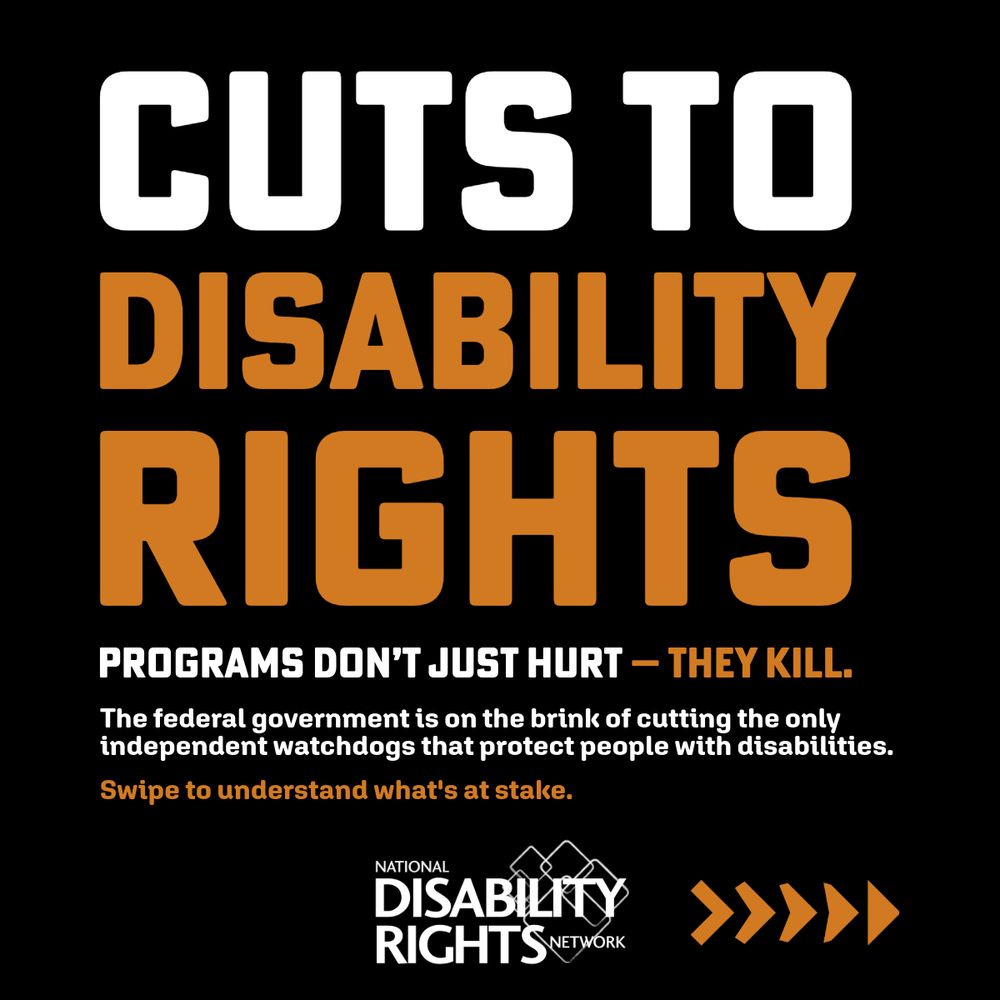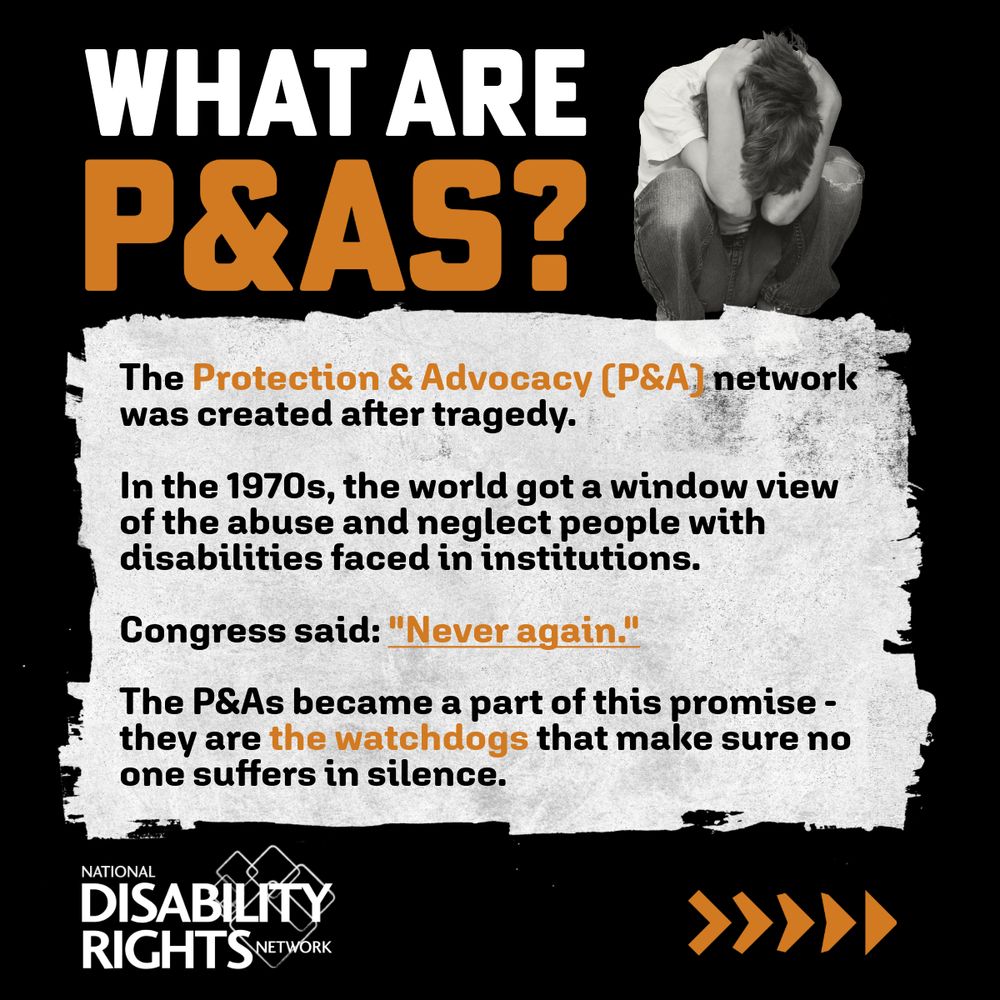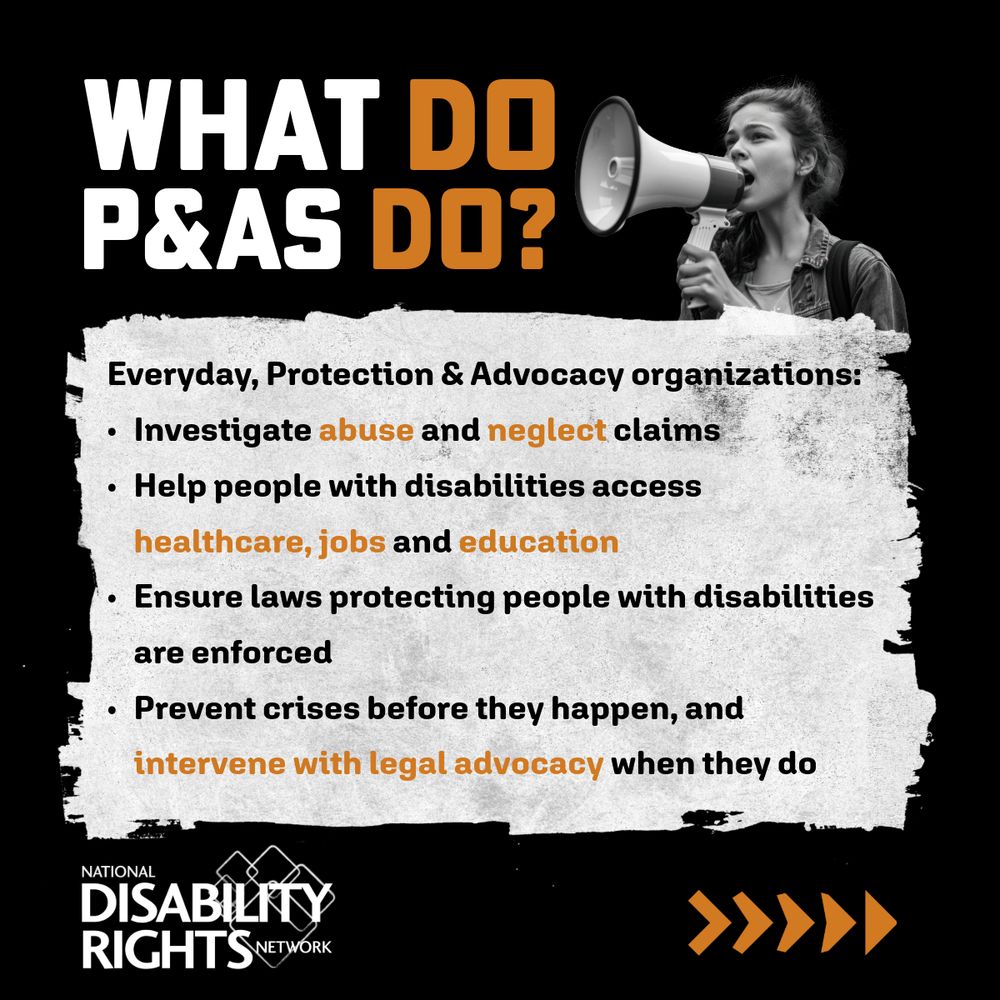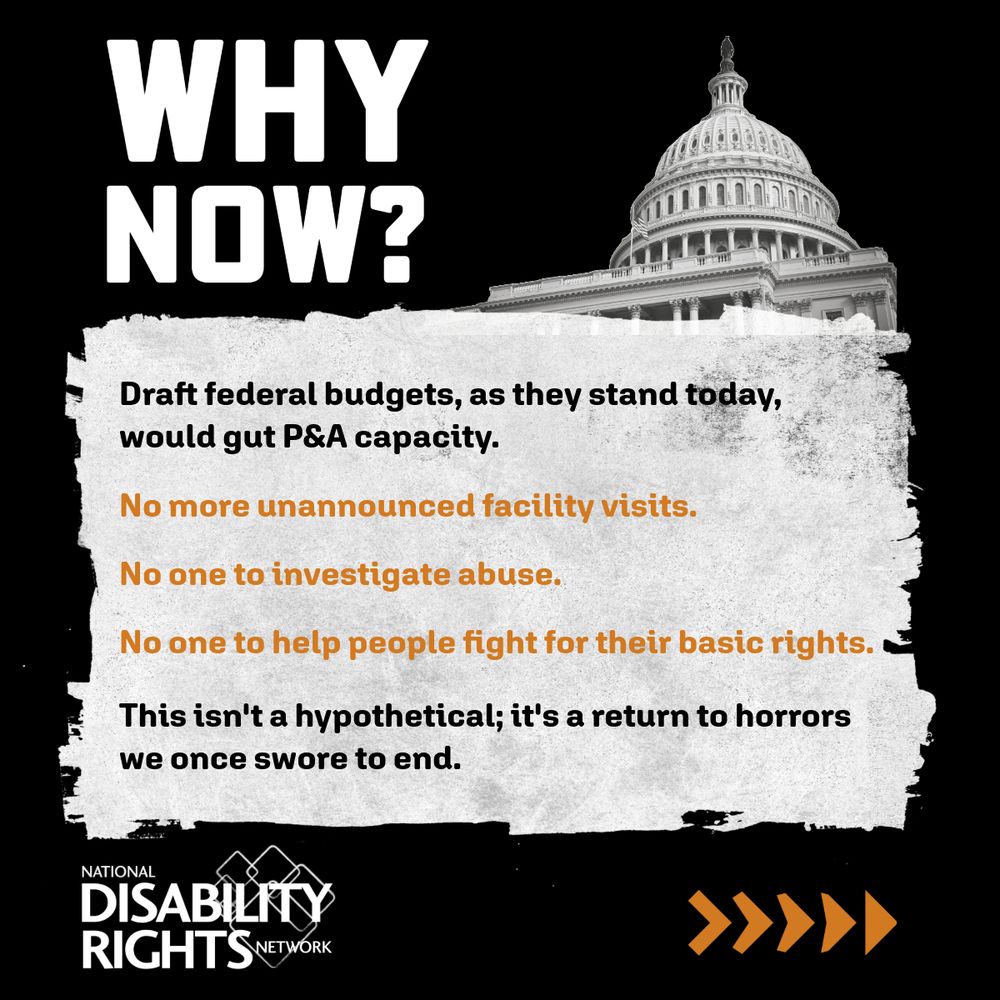




Tell Congress: Protect P&A funding.
ow.ly/vRW350W7LMc
#HandsoffDisabilityServices #ProtectPnAs
https://ow.ly/4bQS50XBxXA

https://ow.ly/4bQS50XBxXA
NDRN fights every day to protect those rights—in classrooms, institutions, communities, and in federal policy.
Donate today and stand with disability rights.
https://www.ndrn.org/donate/

NDRN fights every day to protect those rights—in classrooms, institutions, communities, and in federal policy.
Donate today and stand with disability rights.
https://www.ndrn.org/donate/
Help us fight for strong enforcement; donate today.
https://www.ndrn.org/donate/
#IDEA50 #InclusionMatters #DepartmentOfEducation

Help us fight for strong enforcement; donate today.
https://www.ndrn.org/donate/
#IDEA50 #InclusionMatters #DepartmentOfEducation
Learn more from Disability Rights Maryland: https://disabilityrightsmd.org/assistive-technology-awareness-month/




Learn more from Disability Rights Maryland: https://disabilityrightsmd.org/assistive-technology-awareness-month/
This reporting shows why delays in competency restoration are a disability rights issues and affirms that strong oversight from P&As, including the ADAP is essential.

This reporting shows why delays in competency restoration are a disability rights issues and affirms that strong oversight from P&As, including the ADAP is essential.
“Many people still feel like ‘disability’ is a dirty word”
https://www.nytimes.com/2025/11/15/health/older-people-disability.html

“Many people still feel like ‘disability’ is a dirty word”
https://www.nytimes.com/2025/11/15/health/older-people-disability.html
Rest in power, Alice. 💜


Rest in power, Alice. 💜
In our newest episode, Alden opens up about masking, identity, and why every autistic person deserves autonomy, support, and dignity; no matter how their disability shows up.
Listen now on National Disability Radio: www.ndrn.org/resource/nat...

In our newest episode, Alden opens up about masking, identity, and why every autistic person deserves autonomy, support, and dignity; no matter how their disability shows up.
Listen now on National Disability Radio: www.ndrn.org/resource/nat...
The Kentucky Protection and Advocacy Services Division is asserting its right to investigate alleged abuse of youth.
Learn more:
https://www.kentucky.com/news/politics-government/article312822075.html

The Kentucky Protection and Advocacy Services Division is asserting its right to investigate alleged abuse of youth.
Learn more:
https://www.kentucky.com/news/politics-government/article312822075.html
Here's some resources for veterans with disabilities:
https://www.dol.gov/agencies/vets
https://www.dvnf.org/national-resource-directory/
https://nvf.org/veteran-resources/
https://www.dav.org/get-help-now/

Here's some resources for veterans with disabilities:
https://www.dol.gov/agencies/vets
https://www.dvnf.org/national-resource-directory/
https://nvf.org/veteran-resources/
https://www.dav.org/get-help-now/
Disability Law Colorado's new report alleges dangerous conditions and excessive restraint at a youth treatment center in Cañon City.
https://ow.ly/naKJ50XnNRy

Disability Law Colorado's new report alleges dangerous conditions and excessive restraint at a youth treatment center in Cañon City.
https://ow.ly/naKJ50XnNRy
Accessibility is essential to democracy. ♿
news.bgov.com/litigation/white-house-must-provide-asl-interpreter-for-briefings

Accessibility is essential to democracy. ♿
news.bgov.com/litigation/white-house-must-provide-asl-interpreter-for-briefings
If you have ever voted absentee or using a mail-in ballot as a person with a disability, we would love to hear from you!
Share your experience here → https://forms.office.com/r/Qgq0irEKqe

If you have ever voted absentee or using a mail-in ballot as a person with a disability, we would love to hear from you!
Share your experience here → https://forms.office.com/r/Qgq0irEKqe
Disability Rights Iowa recently surveyed over 140 polling places. Find out more about the barriers they found here:
disabilityrightsiowa.org/what-we-do/v...

Disability Rights Iowa recently surveyed over 140 polling places. Find out more about the barriers they found here:
disabilityrightsiowa.org/what-we-do/v...
If you run into issues, or just need help figuring out where or how to vote, reach out to the Election Protection Hotline at 866-OUR-VOTE (866-687-8683).
AAPD - The American Association of People with Disabilities, Verified Voting


If you run into issues, or just need help figuring out where or how to vote, reach out to the Election Protection Hotline at 866-OUR-VOTE (866-687-8683).
AAPD - The American Association of People with Disabilities, Verified Voting




Please share with your contacts so that folks know what to expect tomorrow!
https://www.ndrn.org/resource/right-to-help-a-guide-to-getting-help-with-voting/

Please share with your contacts so that folks know what to expect tomorrow!
https://www.ndrn.org/resource/right-to-help-a-guide-to-getting-help-with-voting/
Learning our history strengthens our movement.
#DisabilityHistory #DisabilityJustice

Learning our history strengthens our movement.
#DisabilityHistory #DisabilityJustice
Today, we celebrate that progress and continue working toward full participation for all.
#VotingRights #Accessibility #YesAccess #HAVA

Today, we celebrate that progress and continue working toward full participation for all.
#VotingRights #Accessibility #YesAccess #HAVA
We envision a future full of fewer systemic barriers to employment, greater access to vocational rehabilitation services, and access to fair accommodations under the law.
Check out the episode: www.ndrn.org/resource/ndr...
We envision a future full of fewer systemic barriers to employment, greater access to vocational rehabilitation services, and access to fair accommodations under the law.
Check out the episode: www.ndrn.org/resource/ndr...
www.usatoday.com/story/news/e...
www.usatoday.com/story/news/e...
Tell Congress: Restore staffing. Protect access.
https://secure.everyaction.com/tb2b4SUPA0aEKZ8A1BfwQg2

Tell Congress: Restore staffing. Protect access.
https://secure.everyaction.com/tb2b4SUPA0aEKZ8A1BfwQg2
Learn how at NationalVoterEducationWeek.org #NationalVoterEducationWeek




Learn how at NationalVoterEducationWeek.org #NationalVoterEducationWeek
Visit NationalVoterEducationWeek.org to access the tools you need to vote with confidence.

Visit NationalVoterEducationWeek.org to access the tools you need to vote with confidence.


